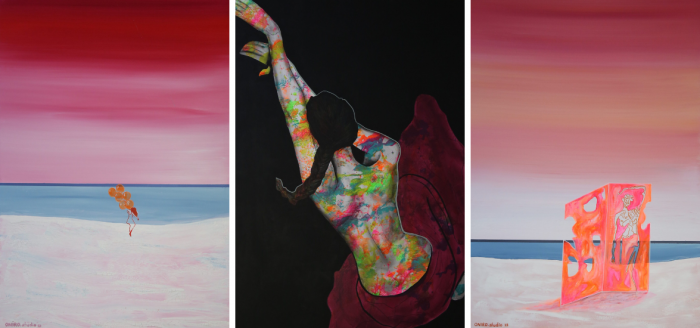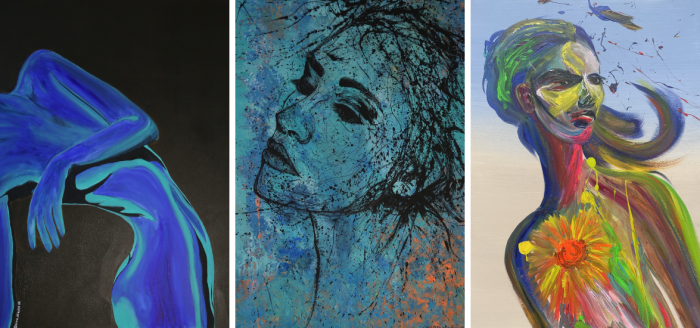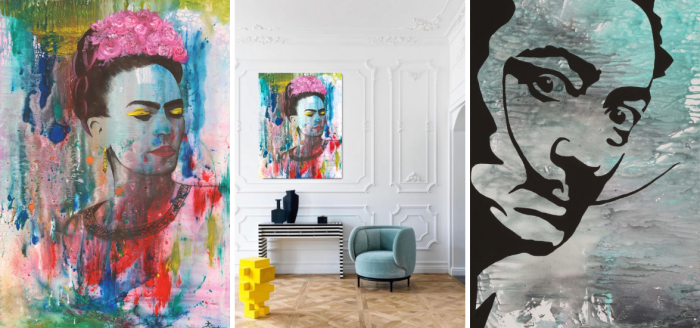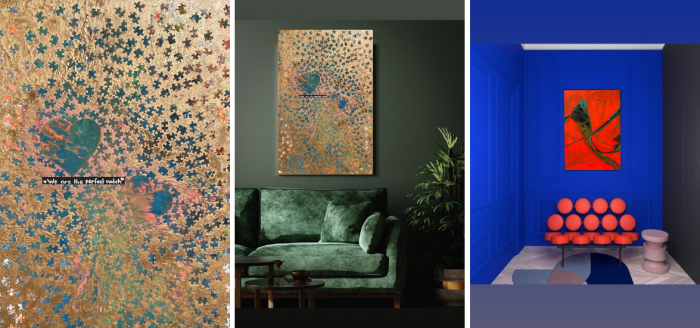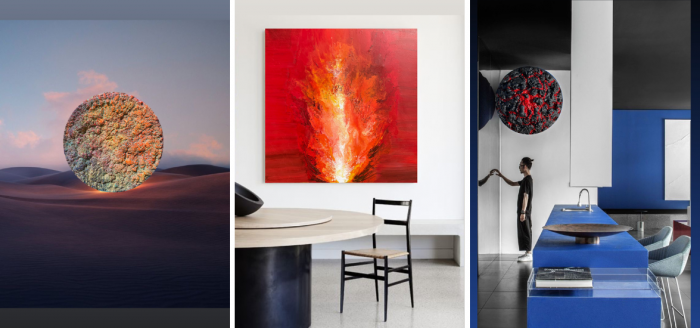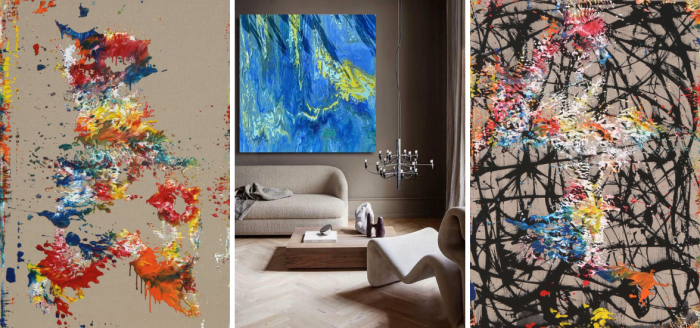
- Permbajtja
- prev
- next
- prev
- next
Elevating though with Art: 8 Compelling Reasons to Embrace Oniro Studio's Paintings in Architectural Design
Architects have a responsibility to create spaces that are not only functional but also emotionally engaging and impactful. One way to achieve this is by carefully considering what art to incorporate into their designs. The choice of artwork can have a significant impact on the overall feeling and psychology of a space, influencing the way people interact with and experience the environment.
For example, a calming piece of art, such as a landscape painting or a minimalist sculpture, can create a sense of relaxation and tranquility within a space. This can be particularly beneficial in spaces such as hospitals, where patients and visitors may be experiencing stress or anxiety.
On the other hand, a vibrant and energetic piece of art, such as a colorful abstract painting or a bold sculpture, can create a sense of excitement and stimulation within a space. This can be beneficial in spaces such as offices or retail environments, where a sense of energy and enthusiasm can be helpful in promoting productivity and engagement.
We teamed up with Oniro Studio, an artist from Tirana, to gather 8 reason why art (especially original art) is important for your project ( if you are an architect) or for your spaces!
Art is a powerful tool that can add depth, emotion, and aesthetic appeal to architectural design, especially to Interior design projects. The great thing about art is that there is something out there for everyone, no matter what your personal style or design preferences may be.
Art is more than just a pretty addition to a space. Incorporating art into architectural design can have a wide range of benefits that go far beyond aesthetics. Here are eight reasons by Oniro Studio why art should be present in your designs:
01 Enhances the aesthetics
One of the most obvious benefits of art is that it enhances the aesthetics of a space. A well-chosen piece of artwork can add color, texture, and interest to an otherwise plain or boring space.
02 Creates a sense of identity
Art can also create a sense of identity within a space. By choosing artwork that reflects the values, beliefs, and culture of the people who will inhabit the space, architects can create a sense of connection and belonging.
03 Adds emotional depth
Art can evoke a wide range of emotions and feelings, from calm and serene to energetic and passionate. By incorporating artwork that evokes a range of emotions, architects can create spaces that are not only aesthetically pleasing but also emotionally engaging and impactful.
These are just a few examples of the beautiful art paintings available from Oniro Studio. By investing in these stunning pieces, you can enhance the beauty and wellbeing of your home while supporting talented artists and celebrating the cultural significance of art.
04 Provides a focal point
Art can serve as a focal point within a space, drawing the eye and creating a sense of visual interest. This can be particularly useful in spaces that might otherwise feel cluttered or chaotic.
05 Improves mental wellbeing
Research has shown that exposure to art can improve mental wellbeing, reducing stress and anxiety and promoting feelings of happiness and relaxation.
06 Encourages creativity
Art can inspire creativity and imagination, encouraging people to think outside the box and come up with innovative ideas.
07 Promotes cultural awareness
By incorporating art from different cultures and regions, architects can promote cultural awareness and understanding, fostering a sense of global community.
08 Adds value
Finally, incorporating original art into architectural design can add value to a space, making it more desirable and increasing its perceived worth. Also can be Original art is unique. Original art pieces are one-of-a-kind, and they bring a unique personality to a space. They can add value and personality to a space in a way that mass-produced art simply cannot.
Incorporating art into architectural design, especially in interior design is not just about creating a pretty space.
It's about enhancing the overall experience of the space, creating a sense of identity and connection, and promoting emotional wellbeing and creativity. So, the next time you're designing a space, consider the many benefits of incorporating art into your plans.
